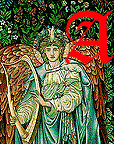 s it turns out, not only Eliot and Pater but Hardy were fully aware of the contributions of Helmholtz to acoustical theory. Cf. Shannon Draucker’s “Hearing, Sensing, Feeling Sound: On Music and Physiology in Victorian England, 1857-1894,” at www.branchcollective.org and also http://brewminate.com (posted January 18, 2019), apparently a chapter from a dissertation in progress. Interestingly, she discusses both Hardy and George Eliot as aware of Helmholtz’s work. On The Return of the Native she notes,: “Eustachia’s name is especially evocarive in the contest of nineteenth-century sound science, given contemporary descriptions of the Eustachian tube” (Draucker, n. 33). I would add that Hardy’s frequent use of folk songs and musical instruments, often in church settings, instances his awareness of how musical interventions may affect the timbre of specific scenes and situations, even if the melodies are unknown to, and therefore “unheard” by most readers. [Return to review.]
s it turns out, not only Eliot and Pater but Hardy were fully aware of the contributions of Helmholtz to acoustical theory. Cf. Shannon Draucker’s “Hearing, Sensing, Feeling Sound: On Music and Physiology in Victorian England, 1857-1894,” at www.branchcollective.org and also http://brewminate.com (posted January 18, 2019), apparently a chapter from a dissertation in progress. Interestingly, she discusses both Hardy and George Eliot as aware of Helmholtz’s work. On The Return of the Native she notes,: “Eustachia’s name is especially evocarive in the contest of nineteenth-century sound science, given contemporary descriptions of the Eustachian tube” (Draucker, n. 33). I would add that Hardy’s frequent use of folk songs and musical instruments, often in church settings, instances his awareness of how musical interventions may affect the timbre of specific scenes and situations, even if the melodies are unknown to, and therefore “unheard” by most readers. [Return to review.]
Bibliography
Coombs. David Sweeney. Reading with the Senses in Victorian Literature and Science. Charlottesville and London: University of Virginia Press, 2019. xi + 224 pages.
Last modified 19 September 2020